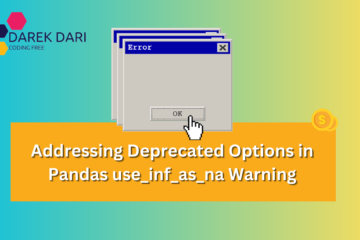Table of Contents
Have you experienced exploring on WordPress site, then the following errors suddenly generated?
- parse error: syntax error, unexpected t_string wordpress,
- parse error syntax error unexpected end of file in wordpress,
- parse error: syntax error, unexpected t_function wordpress,
- parse error syntax error unexpected text t_string wordpress,
- parse error syntax error unexpected if t_if wordpress,
- wordpress parse error syntax error unexpected expecting or ‘;’
Getting to Know Parse Error/Syntax Error
So, you’re banging your head against the wall trying to figure out what the heck is causing that pesky Parse Error/Syntax Error, huh? Don’t worry, fam, we’ve all been there. It’s like when you’re trying to decipher a cryptic message from your ex—frustrating as hell! But fear not, because I’m about to drop some knowledge bombs on you that’ll have you fixing those errors faster than you can say “New York City.”
What Exactly Are Parse Error/Syntax Error?
Let’s break it down real simple-like. A Parse Error/Syntax Error is basically the computer’s way of saying, “Yo, I don’t understand what you’re trying to tell me here.” It’s like when you’re trying to spit some slang that only your crew understands, but you accidentally throw in some gibberish that leaves everyone scratching their heads. Yeah, it’s that kind of vibe.
Now, these errors can pop up for a bunch of reasons, but the main culprit is usually some funky syntax in your code. Think of it like trying to speak a foreign language with a thick accent—you might get the words right, but if your pronunciation is off, nobody’s gonna know what the heck you’re saying. Same goes for code, my friend.
Common Causes of Parse Error/Syntax Error
Alright, let’s get down to brass tacks. What’s causing these pesky errors? Well, it could be a multitude of things, but here are some common culprits:
- Missing or Mismatched Brackets: Picture this: you’re building a dope fort out of Lego bricks, but you accidentally leave out a crucial piece. Your whole fort comes crashing down, right? Same deal with code—forgetting a closing bracket or using the wrong type can send your whole program into a tailspin.
- Typos and Spelling Errors: We’ve all got fat fingers sometimes, but when you’re typing out code, even the smallest typo can wreak havoc. One misplaced letter or forgotten semicolon, and bam—Parse Error/Syntax Error city, population: you.
- Incorrect Indentation: Ah, indentation—the bane of every coder’s existence. Forget to tab over that line of code? Say hello to your new best friend, Mr. Parse Error/Syntax Error.
What Causes PHP Parse or Syntax Errors in WordPress? 🕵️♂️
Ah, the enigmatic PHP parse or syntax error—a thorn in the side of many a WordPress developer. But fear not, for we shall demystify its origins and shed light on its elusive nature.
The culprit behind a syntax error can vary, depending on the recent changes made to your files. These alterations serve as breadcrumbs, guiding you towards the source of the error and offering clues on how to rectify it. For those seeking assistance, services like WP Buffs stand ready to lend a helping hand in resolving and averting such issues. 💪

If a syntax error rears its head shortly after installing a plugin or theme on your WordPress site, chances are the newly added plugin or theme is to blame. In such cases, the optimal course of action is to bid farewell to these troublemakers by disabling them.
Furthermore, a code edit gone awry can also spell trouble for your WordPress site. Even the tiniest oversight—such as a missing comma—can throw a wrench into the smooth operation of your website, rendering the admin dashboard inaccessible. Fear not, for salvation lies in the form of a trusty File Transfer Protocol (FTP) client, granting you access to the site’s files for swift intervention. 🛠️
So, as you navigate the treacherous waters of WordPress development, remember to tread carefully, keep a keen eye out for syntax errors, and never hesitate to seek aid when needed. With perseverance and a dash of technical prowess, you shall emerge victorious in your quest to conquer PHP parse or syntax errors. Onward, brave developer, and may your code remain error-free! 🚀
How to Track Down Parse Error in WordPress? 🕵️♂️

So, you’re cruising along, tinkering with your WordPress site, when suddenly—bam!—you’re hit with a syntax error out of nowhere. Talk about a buzzkill, right? But fear not, my friend, for I’m about to drop some knowledge bombs on you that’ll have you sleuthing out those pesky parse errors in no time.
Step 1: Locate the Culprit
The first order of business when faced with a syntax error is to track down its hideout. This means sniffing out the exact file that’s harboring the code gremlin causing all the trouble. Remember, when your site goes kaput due to an error, it’s like trying to find a needle in a haystack. But fear not, we’ve got your back.
Step 2: Uncover the Mystery
A parse error: syntax error, unexpected—it’s the stuff of nightmares for any WordPress developer. It typically rears its ugly head when the PHP interpreter sniffs out a missing element, most commonly a rogue curly bracket “}”. Now, to crack this case wide open, you’ll need to roll up your sleeves and dive deep into the code trenches.
Step 3: Detective Work
Finding the source of a parse error can feel like searching for a needle in a haystack, especially when the error message leads you on a wild goose chase. But fear not, for every mystery has its clues. One pro tip? Don’t rely solely on the line number indicated in the error message—it can be as misleading as a faulty compass.
Step 4: Prevention is Key
They say an ounce of prevention is worth a pound of cure, and nowhere is that more true than in the world of coding. To avoid falling victim to the dreaded parse error, make it a habit to run thorough tests on your scripts during the programming phase. Trust me, a little extra legwork now can save you a world of headache later on.
WordPress Core File Replacement
Hold up, folks! Before we dive back into the nitty-gritty of troubleshooting parse errors in WordPress, I’ve got an exciting interruption to share with you. Ever felt like juggling the demands of multiple clients is more stress-inducing than rewarding? Well, fret no more, because I’ve got the perfect solution for you: BeTheme—the ultimate multipurpose theme that’ll revolutionize your web design game.
BeTheme: Your Stress-Free Solution
BeTheme isn’t just your run-of-the-mill theme—it’s a game-changer. With its extensive library of hundreds of customizable, responsive pre-built websites, BeTheme takes the hassle out of satisfying diverse client needs. Whether you’re crafting a sleek portfolio, an eye-catching e-commerce site, or a captivating blog, BeTheme’s got you covered.

Unleash Your Creativity
What truly sets BeTheme apart is its unrivaled customizability. With four types of Page Builders at your disposal—including WPBakery, BeBuilder, and Elementor—your design possibilities are virtually limitless. And now, with the addition of the Live Builder feature, bringing your vision to life has never been easier or more enjoyable.
Why Users Love BeTheme
But don’t just take my word for it—countless users swear by BeTheme for its versatility, ease of use, and stunning results. Join the ranks of satisfied designers and experience the BeTheme difference for yourself.
Ready to take your web design game to new heights? Check out BeTheme today and see why it’s the go-to choice for designers worldwide!
Now, back to our regularly scheduled programming.
In some cases, a corrupted core file in WordPress can also give rise to similar errors on the website. To solve this, you may simply replace the core files in WordPress.
Another tip is to always keep a backup of the latest core files to reduce the chances of losing changes applied to the site. A backup restore will make your website revert to its previous version.
To replace the core file in WordPress, you must replace every element except wp-config, .htaccess, and wp-content because replacing any of those elements will affect the details which might result in data loss. 🛠️
Backup Restore: Your Safety Net

If you’re still stuck in the syntax error maze despite your best efforts, it’s time to turn to backup restore. This trusty tool rewinds your website to a previous, error-free state, undoing recent changes that may have caused the issue.
When to Restore
When traditional troubleshooting methods fail, backup restore steps in as your last line of defense. Whether you use cPanel, a WordPress plugin, or another backup solution, the goal remains the same: revert your site to a known-working version.
Precision Counts
You don’t always need a full-site restore. Depending on the error, a targeted file restore might suffice. Consult your error log for clues on which file needs attention, then restore it with precision.
Backup restore isn’t just a safety net—it’s your ticket out of error hell. With this tool in your arsenal, you can confidently tackle syntax errors, knowing you have a fail-safe solution to fall back on. 🔄
Disable Plugins and Themes

So, you’ve tried everything under the sun to squash that pesky syntax error, but it’s still clinging to your code like a stubborn barnacle. Before you pull out your hair in frustration, let’s try a simple yet effective solution: disabling plugins and themes.
Pinpointing the Culprit
If the error reared its ugly head after activating a plugin or switching themes, chances are, that’s where the trouble lies. By disabling all plugins and themes, you can isolate the source of the error and eliminate any conflicting elements.
Streamlined Troubleshooting
Think of this as a process of elimination. By stripping away unnecessary plugins and themes, you’re streamlining your site’s setup and honing in on the root cause of the error. It’s like decluttering your workspace to clear your mind.
How to Disable
Disabling plugins and themes is a breeze. Simply navigate to your WordPress dashboard, head over to the Plugins or Themes section, and deactivate them one by one. Keep an eye out for any changes—if the error disappears, you’ve found your culprit.
When it feels like you’re stuck in syntax error purgatory, sometimes the best approach is to strip things back to basics. By disabling plugins and themes, you’re taking a step towards a cleaner, leaner website—and, hopefully, a syntax error-free future. 🛑
How to Fix Parse Error/Syntax Error Like a Pro
Alright, enough with the doom and gloom—let’s talk solutions. Here’s how you can squash those errors like a boss:
| Error Type | Solution |
|---|---|
| Missing Brackets | Double-check your code for any missing or mismatched brackets. |
| Typos and Spelling | Go through your code with a fine-tooth comb and hunt down those sneaky typos. |
| Incorrect Indentation | Make sure your code is properly indented and formatted for maximum readability. |
Troubleshooting Parse Error/Syntax Error with Precision
Alright, let’s dive deeper into one of the more straightforward yet essential errors in the coding world—the dreaded ‘parse error’ or ‘syntax error’. Despite the hair-pulling frustration it might bring, this type of PHP error at least has the decency to point you straight to the problem. Let’s unpack it further. Parse Error Syntax Error
This error often rears its head when there’s a hiccup in your site’s code, typically occurring after you’ve added a new code snippet with incorrect syntax (commonly found in the functions.php file). Instead of your page gracefully loading, you’re greeted with a blunt message that spells out the issue and precisely where it went awry.
Now, to tackle this troublemaker head-on, you’ll need to roll up your sleeves and dive into the backend of your site using SFTP. We’ll utilize FileZilla for this task, a trusty tool that’s both free and open-source. Just plug in the SFTP credentials provided by your web host, and voila! You’re in.
Next up, the hunt begins for the elusive file causing all the commotion. Take a cue from our example—it’s the functions.php file nestled snugly in your theme’s folder. Right-click, select View/Edit, and let’s get to work. Parse Error, Find the file
Inspect the Parse error message closely, and you’ll notice it generously discloses the exact line of code that’s throwing a tantrum. Armed with this information, it’s time to play detective and locate the culprit. In our scenario, it’s a mere missing parenthesis—a common slip-up, easily corrected. Parse Error code
Once you’ve patched up the code, hit save, and when prompted by your FTP client, confirm that you want to replace the existing file on the server. With bated breath, reload your site, and behold—it should be back to its former glory. 🛠️
Conclusion
And there you have it, fellow coders—our journey through the labyrinth of Parse Error/Syntax Error troubleshooting draws to a close. While these errors may seem like formidable foes at first glance, armed with the right knowledge and tools, you can tame them like a seasoned warrior.
Remember, in the realm of coding, errors are not signs of defeat but rather stepping stones to mastery. Each parse error encountered is an opportunity to sharpen your skills, deepen your understanding, and ultimately emerge stronger on the other side.
Learn more
So, as you navigate the intricate landscapes of your codebase, don’t be disheartened by the occasional syntax hiccup or missing bracket. Embrace the challenge, harness the power of perseverance, and let each error propel you further along the path of coding enlightenment.
As we bid adieu to this chapter on Parse Error/Syntax Error, let us carry forth the lessons learned and the solutions uncovered. May your code be clean, your syntax error-free, and your troubleshooting skills honed to perfection.
And there you have it, folks—your crash course in tracking down parse errors in WordPress like a seasoned detective. Armed with these tips and tricks, you’ll be dodging syntax pitfalls like a pro in no time. So go forth, brave coder, and may your code always be clean, your errors easily vanquished, and your WordPress site forever free of pesky parse errors. Happy coding! 🚀
Now, go forth, my fellow coder, and may your journey be filled with triumphs, discoveries, and the occasional debug victory dance. Until next time, happy coding! 🚀







0 Comments